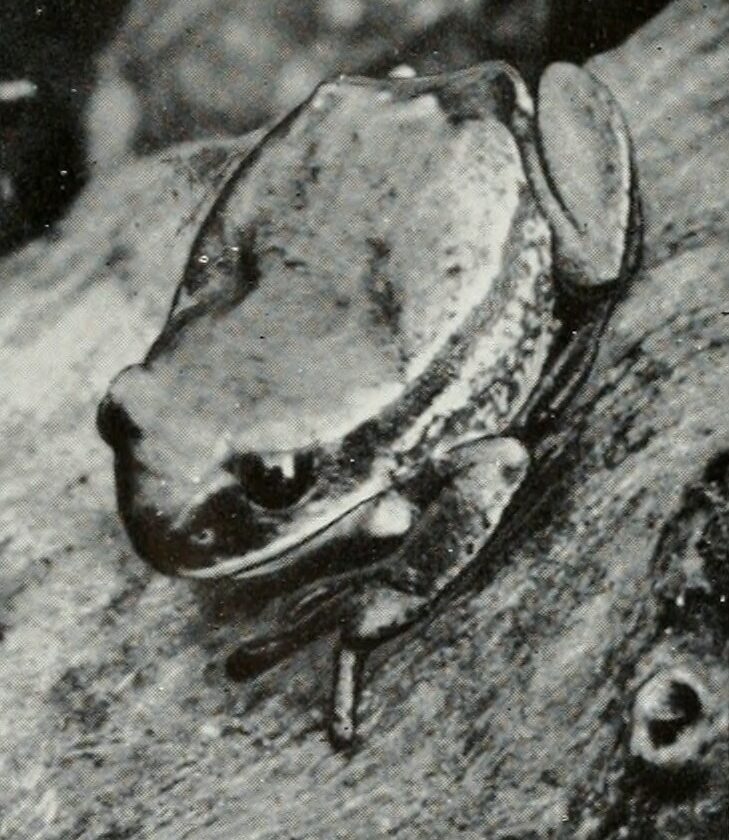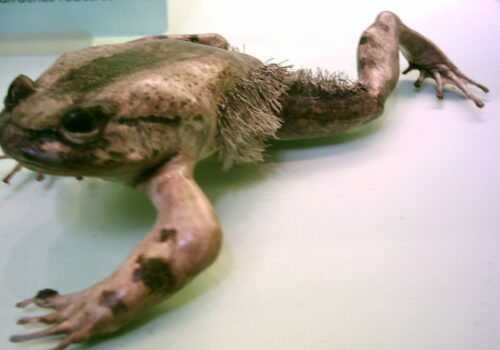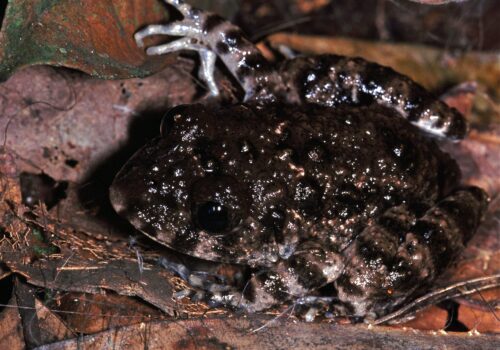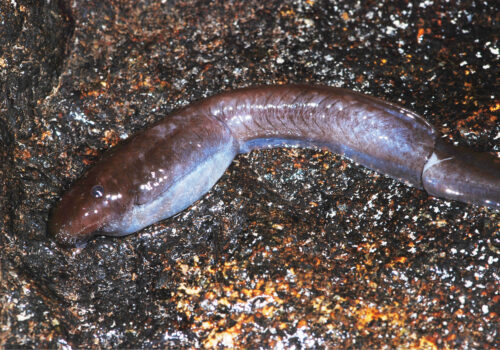- Meet Leptopelis anchietae: Angola's Enchanting Tree Frog of Hidden Forest Realms
- Understanding the Family Tree: Taxonomy and Classification
- A Jewel Hidden Among Leaves: Natural Habitat and Range
- Graceful Camouflage: Physical Characteristics of Leptopelis anchietae
- An Orchestra After Dusk: Behavior and Life Cycle
- An Integral Forest Resident: Ecological Role and Interactions
- Facing Modern Perils: Threats and Conservation Status
- Cultural and Scientific Legacy: Beyond the Forest Floor
- Guardians of Hidden Forest Songs
Meet Leptopelis anchietae: Angola’s Enchanting Tree Frog of Hidden Forest Realms#
On a still, humid night deep within Angola’s lush forest landscapes, the gentle hum of nocturnal insects sets the stage. Suddenly, softly yet unmistakably, bursts forth a crystalline whistle-like melody cutting distinctly through the ambient murmurs. Too pure to be mistaken for anything else, this enchanting call belongs to Leptopelis anchietae, a striking tree frog species that remains one of nature’s best-kept secrets. Known locally as Anchieta’s Tree Frog, this captivating amphibian not only captures interest with its distinctive vocalizations but also enchants any careful observer through its charismatic appearance and intriguing behaviors.
Though rarely spotlighted in popular wildlife documentaries, Leptopelis anchietae is a species whose efficient camouflage, unique ecological role, and fascinating behaviors invite us into a deeper appreciation of the delicate balance hidden within Angolan ecosystems. Let’s embark on an immersive journey into its world, unraveling the biology, ecology, and conservation story surrounding this remarkable little amphibian.
Understanding the Family Tree: Taxonomy and Classification#
Within the fascinating and diverse world of amphibians, Leptopelis anchietae belongs to the family Arthroleptidae—a group of wonderfully adaptive frogs distributed prominently across sub-Saharan Africa. The genus Leptopelis, often colloquially called “forest tree frogs,” is particularly renowned for its arboreal habits, attractive coloring, and melodious mating calls.
As scientific names often tell compelling natural history stories, Leptopelis anchietae was first scientifically described in 1873 by Portuguese zoologist José Vicente Barbosa du Bocage. The species bears the name anchietae in honor of José Alberto de Oliveira Anchieta, a legendary Portuguese naturalist and explorer who discovered numerous African species during his extensive field expeditions through Angola.
Genetically and morphologically, Leptopelis anchietae is closely related to other tree frogs within its genus, particularly those occupying similar rainforest habitats. Nonetheless, even within this close-knit lineage, Anchieta’s Tree Frog distinguishes itself through subtle yet defining morphological characteristics and behavioral traits unique to its Angolan ecosystems.
A Jewel Hidden Among Leaves: Natural Habitat and Range#
The lush heartland of Angola, particularly the abundant gallery forests, woodland savannas, and moist miombo woodlands offers the ideal home for Leptopelis anchietae. Geographically confined mainly within Angola’s borders and adjacent regions of Zambia and the Democratic Republic of Congo, this charismatic frog has evolved specialized traits that perfectly suit its arboreal lifestyle—it thrives in dense forest canopies, thick bush patches, and wooded habitats adjacent to rivers or streams.
An evening exploration in these forests brings forth an immersive experience. Wandering along shaded streambeds illuminated softly by moonlight, you might notice thin tendrils of fog blanketing the trees, shrouding sturdy branches in moisture—conditions perfectly suited for amphibian life. It is here that Anchieta’s Tree Frog reaches its ecological pinnacle, steadfastly serving as both predator and prey within this delicately balanced forest web.
During rainy seasons, these forest habitats transform remarkably, becoming a mosaic of moisture and life. Temporary pools and lush vegetation grow thicker, setting the perfect stage for Leptopelis anchietae‘s breeding activities. The species’ strong association with such moisture-rich microhabitats highlights its sensitivity to habitat disturbances and emphasizes the importance of conserving its natural range.
Graceful Camouflage: Physical Characteristics of Leptopelis anchietae#
The aesthetic charm of Anchieta’s Tree Frog makes it a fascinating subject for wildlife enthusiasts. Petite yet robust, this species typically ranges from 40 to 60 millimeters in length. Its limbs, slender and agile, equipped with rounded toe pads, perfectly suit its arboreal mode of existence—allowing for effortless leaps across branches and leaves above the forest floor.
The exquisite color palette adorning Leptopelis anchietae further contributes to its enigmatic allure. Its body coloration shows remarkable variability among individual frogs and even within single populations, ranging from subtly mottled shades of green and brown to captivating patterns of beige, olive, or rust-red hues. These nuanced yet diverse colors serve as impeccable camouflage amidst fluctuating dapples of sunlight penetrating dense foliage, offering effective protection from predators.
Particularly notable is the species’ conspicuous eyes, large and prominent, often displaying striking golden or bronze-gold irises with vertically slit pupils. This distinctive feature lends Anchieta’s Tree Frog an alluring, feline-like gaze; observing these eyes reflect softly in torchlight during nighttime frogging expeditions provides an undeniable thrill.
An Orchestra After Dusk: Behavior and Life Cycle#
Mating Melodies#
As twilight descends, the forest transitions from quiet daytime shelter to a vibrant symphony of calls—the mating ritual of Leptopelis anchietae. Male frogs typically initiate their passionate courtship serenades, perching prominently on low branches or vegetation near temporary water bodies. Their clear, whistle-like melodies resonate through the night, enchanting potential mates and capturing listeners’ attention with their rhythmic precision and tonal clarity.
A Tender Procession: Mating and Reproduction#
Attracted by these acoustic displays, female frogs gracefully approach, inspecting the advertisement calls of potential partners carefully. Subsequently, mating couples engage in amplexus, the embrace typical among frogs—where the male clasps the female securely during egg deposition, ensuring successful fertilization as she lays her clutch within carefully selected moist leaves just above or along shallow pools or slow-moving water channels.
From Tadpole to Froglet#
As pristine waters cradle egg clusters, tadpoles soon emerge—tiny, aquatic larvae navigating carefully the edges of their temporary homes. Feeding diligently on algae, organic debris, and small aquatic organisms, these larvae quickly develop under optimal conditions. Within weeks, they metamorphose, growing limb buds, reducing their pronounced tail, taking their first tentative leaps onto land as miniature versions of their parents.
These remarkable cycles, marked by attention-demanding care and precise habitat selections, further underline the sensitive ecological requirements of this charismatic frog. Any significant shifts or habitat disruptions risk dramatically impacting the populations thriving within such finely balanced conditions.
An Integral Forest Resident: Ecological Role and Interactions#
As both predator and prey, Leptopelis anchietae occupies a vital niche in maintaining ecological equilibrium. Adult frogs actively forage for small invertebrates: ants, mites, moths, beetles, and small spiders scouting rainforest foliage nightly, helping regulate insect populations within their range. In turn, they offer essential nutrition sources to numerous larger predators, from snakes and birds to mammals like shrews, ensuring fundamental energy flow within their ecosystem.
Due to their famously permeable amphibian skin, this species acts as a reliable ecological bioindicator—highlighting environmental changes, particularly the health and quality of aquatic habitats and surrounding terrestrial vegetation.
Facing Modern Perils: Threats and Conservation Status#
Despite their adaptability, populations of Leptopelis anchietae grapple increasingly with modern threats. Habitat loss due to logging, agriculture expansion, and urban development pose substantial danger, while climate shifts influence vital rainfall patterns and water availability, crucial for reproduction. Consequently, the International Union for Conservation of Nature (IUCN) lists this remarkable species as currently of “Least Concern,” yet acknowledges the pressing threat of habitat degradation—emphasizing vigilance and proactive conservation measures to secure future populations.
Cultural and Scientific Legacy: Beyond the Forest Floor#
Historically celebrated through storytelling, local traditions often revere Anchieta’s Tree Frog as symbols of rainforest resilience and natural harmony. Scientifically, each vibrant detail recorded about their lives adds to broader ecological understandings—serving as cornerstones in biodiversity studies and habitat preservation.
Guardians of Hidden Forest Songs#
Sensitively nestled within Angola’s fragile ecosystems, Leptopelis anchietae exemplifies the vibrant intersection between scientific marvel and cultural symbolism. Immersed in their subtle yet significant chorus, we’re reminded profoundly of our interconnectedness to nature and our responsibility to nurture and safeguard the ecosystems hosting these beautiful, melodic creatures for future generations.
Let us engage actively—supporting conservation efforts, promoting sustainability, and preserving the exquisite melody of Anchieta’s Tree Frog long beyond the still nighttime forests of Angola.













